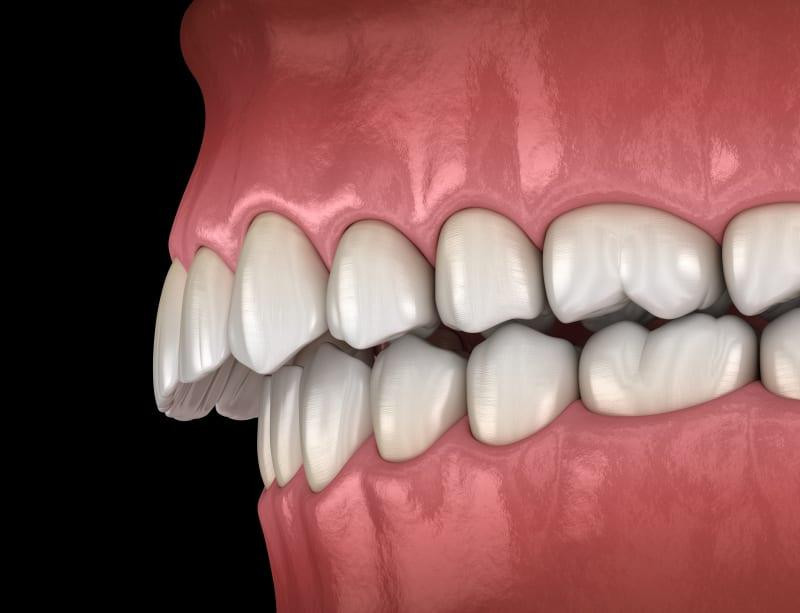Braces are one of the most common orthodontic treatments, but that doesn’t mean they’re always quick and easy. You might be surprised at just how long it takes to fix an overbite, even if you have braces on your teeth, since each case is unique and can require more time or a different treatment approach. Read on to learn more about what to expect during your journey to an overbite-free smile!
Before starting the treatment
Before starting braces, you’ll need X-rays of your teeth to ensure there are no issues or health concerns that would prevent you from having orthodontic treatment. These X-rays will help your dentist determine how much space is available for shifting your teeth and will aid in developing a treatment plan that’s most effective. At least three X-rays should be taken over time (usually six months), allowing your dentist to track changes as they occur. The goal is to see incremental progress throughout your course of treatment so you can have realistic expectations of what’s possible within a certain timeframe. After all, some orthodontic problems are simply more challenging than others and take longer than usual for results to show.
Preparing the teeth for treatment
The first thing your orthodontist will do is make a mold of your teeth so they can create a personalized treatment plan for you. Depending on how severe your braces before and after overbite is, you might be in for some significant tooth shifting. Most people find it relatively easy to adapt their speech patterns to account for that, though. Your overbite can also impact other aspects of your oral health; since your jaw tends to open wider than normal when you have an overbite, it's common for people with severe ones to get TMJ issues and muscle tension headaches as well. So fixating on biting right isn't just about vanity—it's about improving overall health! In terms of time frame, you shouldn't expect full correction until at least one year after starting treatment. However, braces don't permanently change anything; once you take them off, your bite goes back to where it was before treatment started. That means if there are any lingering problems with how your bite looks or feels afterward (and there often are), consult a dentist about fixing them with surgery or by wearing retainers for six months or longer afterward.
The duration of treatment
Your orthodontist can only give you a good idea of how long your treatment will take based on your specific needs and any dental issues that you have. However, in general, it takes about one year for every year of age for children to be fully treated with braces. This means that if you’re 13 years old and have had your braces on for three years, you should be nearly done! You might consider having them off completely by 18 or 19 years old. On average, adults need two to four years of treatment; however, it’s important to remember that many adults wear their retainers after they complete treatment just in case they begin getting some unwanted teeth movement back over time. If you do decide to go with Invisalign® instead of traditional metal braces, it will likely take even longer than normal as well because Invisalign® moves teeth little by little during each set of aligners. This requires patients to change out their trays a few times per month rather than once or twice per year like they would otherwise. Be sure to check out our infographic below that shows you exactly what treatment looks like when wearing both types of devices! From start-to-finish: If possible, schedule regular appointments right from day one until your last visit is completed (which is usually around 15-18 months). The most important part is consistency; don't skip appointments unless absolutely necessary!
After the treatment (first week)
The first week of treatment is usually pretty uncomfortable for most patients, so your orthodontist will try their best to make you as comfortable as possible. You may be given prescription painkillers or analgesics (like ibuprofen) for treatment days 2 through 7. If your overbite correction was done using braces alone, don’t expect to see any results for several weeks—in fact, it could take months. You won’t know if it’s working properly until after a few months have passed and you can compare before-and-after photos of your bite.
After the treatment (fourth week and later)
Your treatment should last between 18 and 24 months. It may take two years or more for you to achieve your desired results, depending on how overbite before and after braces on your teeth are, your age and how quickly you progress with treatment. Generally speaking, younger patients will require less time in braces than older ones. However, adults often benefit from a shorter treatment plan because their mouths are not as flexible as those of teenagers, making it harder for them to correct severe cases of overbites or crowding. Your orthodontist will discuss these possibilities with you during your consultation appointment.

Comments